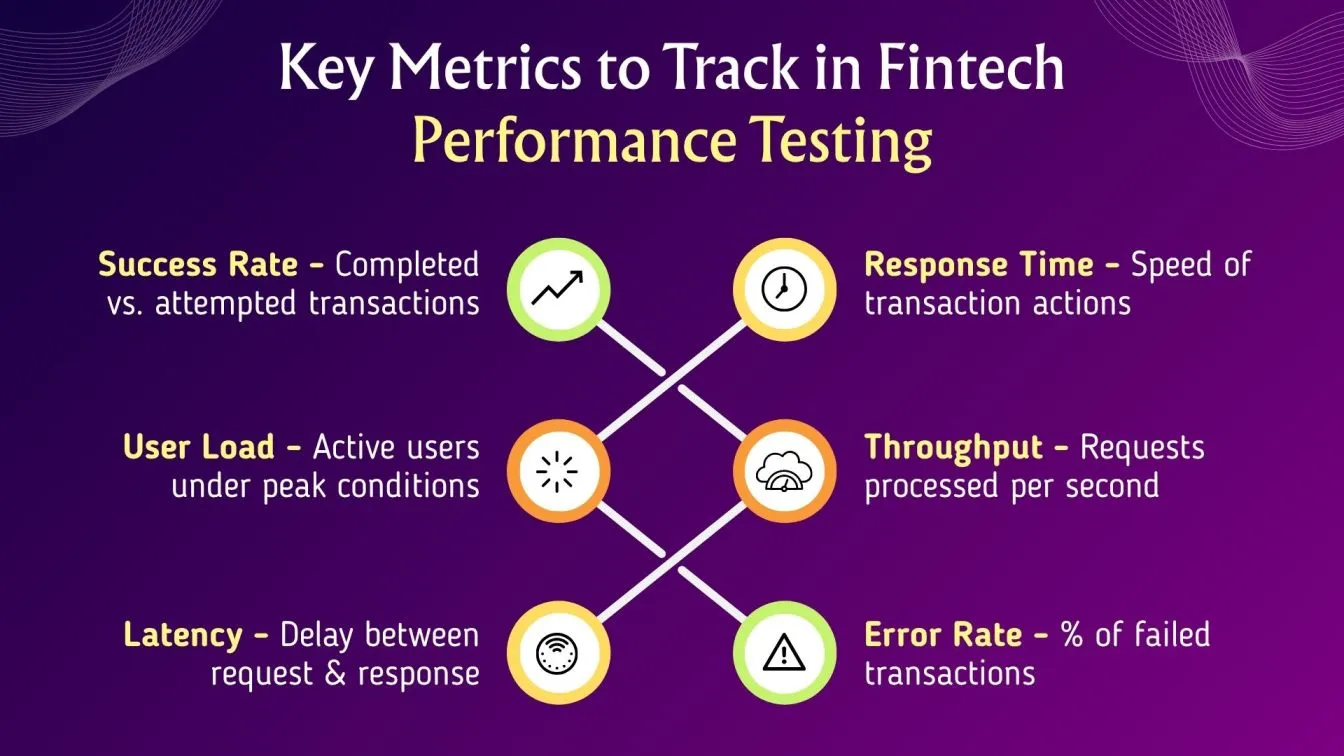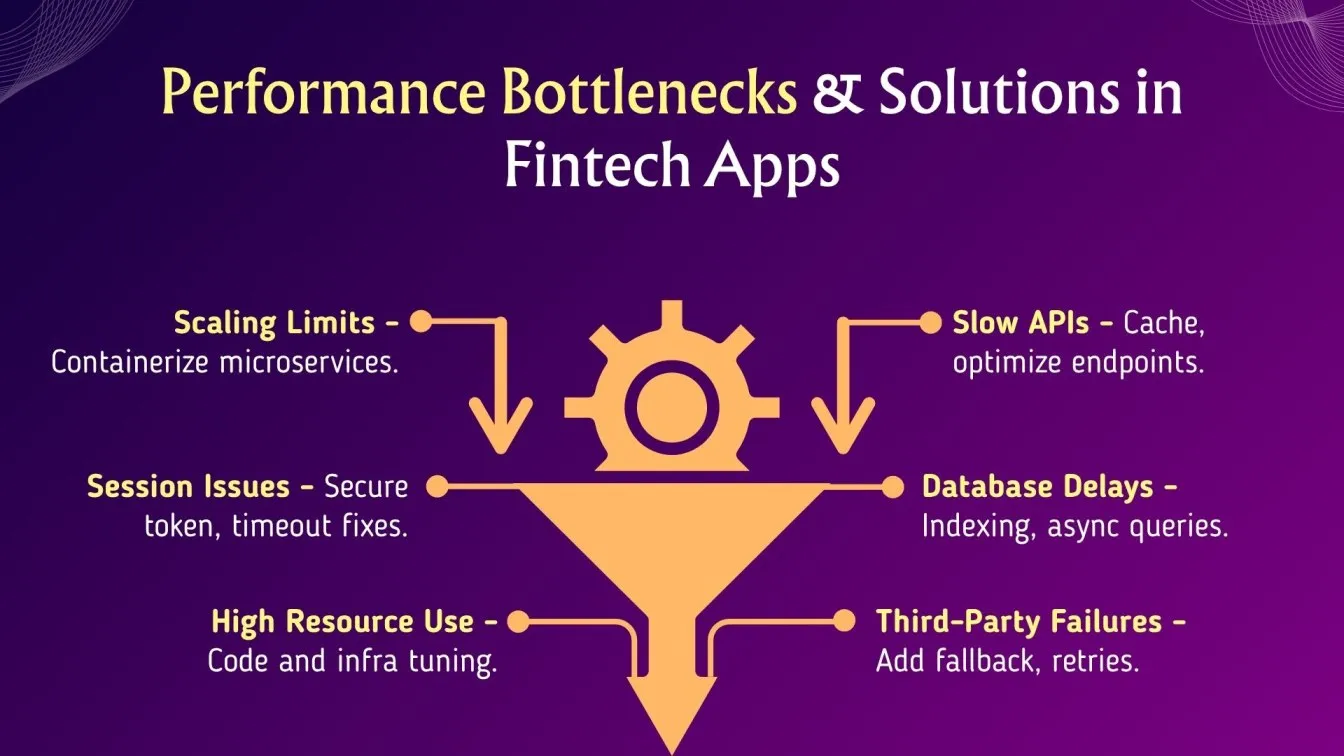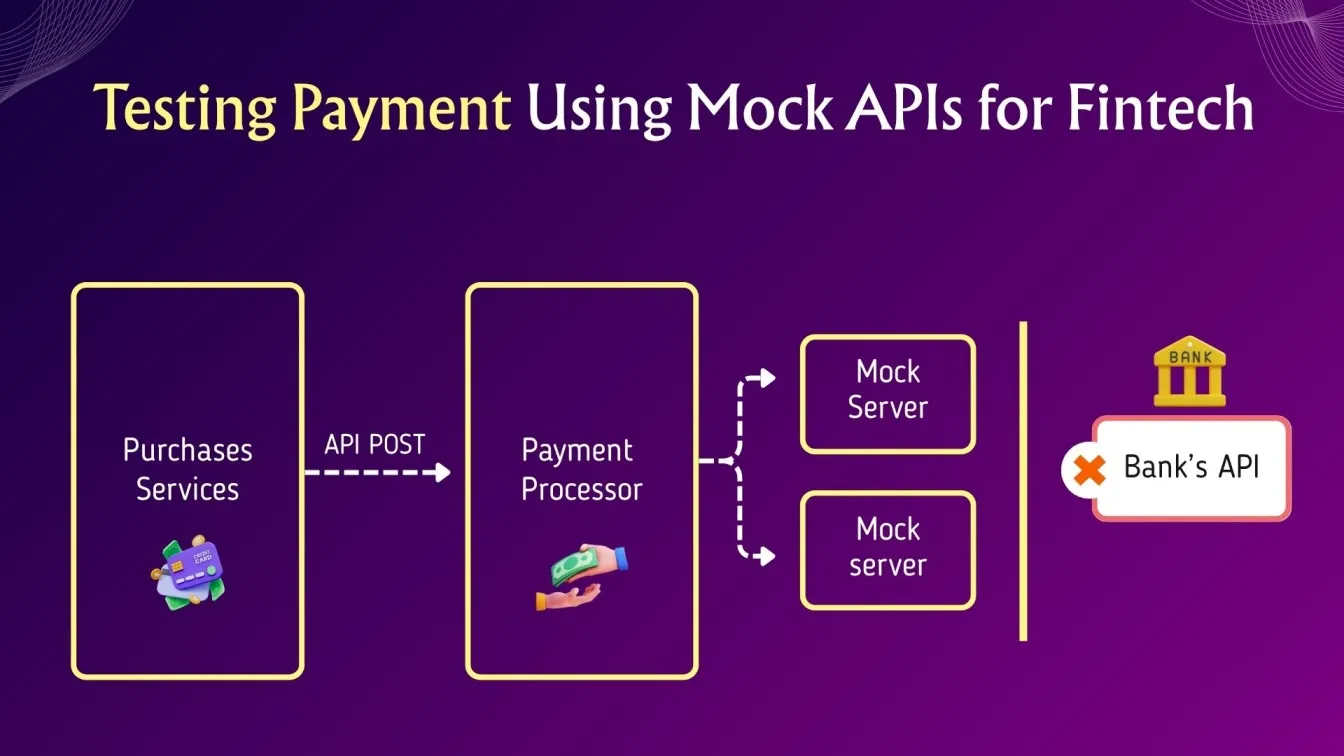Fintech applications are driving digital payments at scale, but ensuring secure transactions is essential to protect user trust and financial data. Apps like CRED must deliver consistent speed and reliability even during peak usage. This is where testing performance becomes critical. It helps identify how a system behaves under varying conditions and ensures stability for millions of users.
Using techniques such as load testing, stress testing, and user experience testing, fintech companies can detect performance gaps early. For the CRED app, this means handling high-volume fintech payments without delays, while also maintaining data integrity and guarding against security data risks.
What’s Next? Keep reading to discover:
🚀 Why Performance Testing Matters - Ensures secure, stable fintech transactions.
🚀 Key Metrics to Track - Monitor latency, errors, and throughput.
🚀 CRED App Bottlenecks - Identify slow APIs and high-traffic issues.
🚀 Proven Testing Strategies - Load, stress, and API performance testing.
🚀 Securing UX & Data Under Load - Maintain a smooth experience and safety.
Understanding the Role of Performance Testing in Fintech
Performance testing is a type of software testing that evaluates how a system performs under expected and peak loads. It helps identify responsiveness, stability, and scalability issues before they impact real users.
Role of Performance Testing in Fintech Apps
Fintech applications handle time-sensitive and high-volume financial operations. Without proper testing, even small delays or failures can lead to loss of revenue, trust, and compliance violations. Performance testing is essential to:
- Ensure secure transactions are processed reliably and on time
- Detect bottlenecks in API calls, database queries, or backend services
- Validate that data security controls stay effective under heavy usage
- Improve mobile user experience and reduce app crashes
- Support compliance with standards like PCI DSS through regulatory stress testing
- Simulate different user conditions using load testing software

Example - Credit Card Bill Payment in the CRED App
- Scenario: On the 1st of every month, CRED sees a surge in users logging in to pay credit card bills.
- Action: The engineering team runs load testing before this cycle using performance testing tools to simulate concurrent users.
- Result: The app stays responsive, ensures secure online transactions & payments, and avoids crashes or slowdowns. This maintains trust and delivers a smooth user experience.
Key Metrics to Track in Fintech Performance Testing
In fintech applications, performance issues directly impact transaction success, user trust, and regulatory compliance. Monitoring a focused set of widely used metrics helps teams validate app behavior, detect problems early, and deliver secure transactions with a seamless user experience. These metrics are critical when testing platforms like the CRED app or any other fintech payment system.

- Response Time: Measures how quickly the system reacts to user requests. In fintech apps, fast response times are essential for actions like UPI payments, balance checks, and credit score retrieval.
- Throughput: Indicates the number of requests processed per second. It helps gauge how well the app handles simultaneous transactions, especially during high traffic.
- Error Rate: Tracks the percentage of failed or incomplete transactions. This metric is vital to ensure reliable, secure online transactions & payments under both normal and peak loads.
- Latency: Represents the delay between sending a request and receiving a response. High latency in fintech solutions can cause failed payments or duplicate transfers.
- Transaction Success Rate: Shows the ratio of successful to attempted transactions. It's a direct indicator of trust and technical reliability in a fintech app.
- Concurrent User Load: Measures how many users are active on the platform at the same time. This is critical for load testing and understanding how the system scales.
Common Performance Bottlenecks in Fintech Apps Like CRED
Fintech apps like CRED manage real-time mobile financial transactions, digital wallets, and secure authentication processes across massive data volumes. Without proper performance testing services and regular API testing, these systems face bottlenecks that can disrupt digital financial services, delay digital banking flows, and increase the risk of social security data breaches. Identifying such weak points is crucial to maintaining secure, scalable, and regulation-compliant fintech software operations in the era of digital transformation and the ongoing digital revolution.

Key Bottlenecks Frequently Found in Fintech Applications:
- Slow API Response Times
APIs are essential for login, transaction processing, and services like credit score checks. Poor API efficiency leads to delayed operations, affecting real-time mobile financial transactions and weakening secure payment methods for online transactions.

- Database Latency and Locking
Unoptimized queries, big data volumes, and locked transactions can impact wallet balance retrieval and history tracking, especially under load testing or high-traffic simulations. - Third-Party Integration Failures
Reliance on banks, KYC vendors, or gateways often introduces delays. These issues worsen under stress testing and can lead to non-compliance with regulatory requirements and regulatory standards. - High CPU/Memory Usage
Inefficient code or poor memory handling leads to slowdowns and crashes, compromising data privacy and increasing the risk of a data breach, especially during peak hours. - Authentication and Session Handling Delays
Apps like CRED implement multi-factor authentication (e.g., OTPs, tokens). Poor session control can cause login failures and affect user experience, often highlighted through user experience testing. - Non-Scalable Microservices
Components like reward engines, analytics, or notifications must scale with demand. In digital investment platforms, failure to scale leads to broken workflows and a drop in transaction reliability during traffic surges.
Proven Strategies to Performance Test Fintech Apps for Secure Transactions
Effective performance testing strategies help fintech startups like CRED ensure stability, data security, and a smooth user experience under pressure. The following approaches are essential to prepare systems for real-world traffic, high concurrency, and secure operations.
CRED App - Performance Strategies for Secure Transactions:
Simulate Peak User Load
To evaluate how the fintech application handles the highest expected number of concurrent users, ensuring uninterrupted service during usage spikes.
Key challenges:
- Fintech apps like CRED experience predictable load spikes, such as on credit card bill due dates or during cashback campaigns.
- During these spikes, backend servers may get overloaded, resulting in API delays, transaction timeouts, and reward redemption failures.
- These issues can lead to failed secure transactions, slow UPI payments, and a disrupted user experience.
CRED’s Approach to Resolution:
- Tools Used:
- Apache JMeter and Locust were used to simulate load testing scenarios.
- AWS CloudWatch, Grafana for infrastructure monitoring
- Methodologies Applied:
- Simulated peak user behavior across payment and login flows
- Enabled autoscaling and API load balancing
- Identified and optimized slow endpoints through test result analysis
Result:
By simulating peak user load and addressing bottlenecks, the CRED app maintained stable performance during high-traffic periods. This reduced API failures, minimized downtime, and improved transaction success rates, boosting user trust in secure online payments.
Perform Stress Testing to Find Breaking Points
To evaluate how the application behaves when pushed beyond its normal operating limits, helping teams identify failure thresholds and recovery behavior.
Key challenges:
Fintech apps may face unexpected usage spikes during flash offers, regulatory changes, or system retries after downtimes. These surges can lead to memory overflows, server crashes, or API lock-ups. Uncontrolled failure can disrupt secure transactions and compromise service reliability. Without proper stress testing software, identifying these weak points becomes difficult.
CRED’s Approach to Resolution:
- Tools Used:
- Apache JMeter, k6 for spike and stress testing tools
- Datadog and AWS CloudWatch for failure monitoring and logs
- Methodologies Applied:
- Simulated traffic that exceeds system capacity to trigger controlled failures
- Observed system response under failure (e.g., retries, timeout handling, error messages)
- Tuned auto-healing and rollback mechanisms to minimize downtime
Result:
By conducting regular stress testing, the CRED app identified its breaking points in advance and implemented safeguards. This improved its ability to recover from traffic surges, ensured stability under extreme conditions, and protected the integrity of secure fintech transactions.
Optimize API Performance by Measuring Latency
To ensure APIs powering core financial operations respond consistently and quickly, even during peak load or high-volume scenarios.
Key challenges:
Fintech APIs, especially those involving payments, authentication, and third-party calls, are prone to high latency due to heavy queries or external service delays. These issues can slow down transactions, frustrate users, and lead to failed or duplicated payments.
CRED’s Approach to Resolution:
- Tools Used:
- Datadog APM, New Relic for endpoint latency tracking
- Postman Monitors for scheduled API performance checks
- Methodologies Applied:
- Defined performance SLAs for high-priority APIs (e.g., balance fetch, payment trigger)
- Used distributed tracing to isolate and fix slow endpoints
- Cached frequently accessed data with Redis
- Compressed large API responses to reduce processing time
Result:
With continuous API monitoring and optimization, CRED significantly reduced latency across key services. This ensured faster payment flows, improved user satisfaction, and minimized the risk of transaction errors or drop-offs.
Assess User Experience During High Traffic
To evaluate how application performance affects user flows, such as login, payment confirmation, and rewards, when traffic is unusually high.
Key challenges:
Under load, fintech apps may show slow screen transitions, delayed form submissions, or failed UPI actions. These issues create friction in the user journey and can impact customer retention and transaction completion.
CRED’s Approach to Resolution:
- Tools Used:
- Lighthouse CI and PageSpeed Insights for performance scoring
- Real device testing using BrowserStack to capture real-world user behavior
- Methodologies Applied:
- Ran performance tests simulating high-traffic user journeys (e.g., bill payments, referral flows)
- Collected metrics on page load times, input delay, and visual stability
- Prioritized UX optimizations based on high-impact flows (e.g., payment confirmation, reward unlock)
Result:
CRED identified UI lags and frontend bottlenecks during high usage and resolved them to ensure a seamless mobile user experience. As a result, user drop-offs decreased, and the platform maintained usability even during peak usage hours.
Verify Data Security During Heavy Usage
To confirm that critical data security mechanisms like encryption, access control, and session handling remain intact during high-load conditions.
Key challenges:
High user load may expose vulnerabilities like session leaks, race conditions, or inconsistent access control enforcement. These risks can lead to the exposure of sensitive financial data or failed compliance with security standards.
CRED’s Approach to Resolution:
- Tools Used:
- Burp Suite for runtime security testing
- OWASP ZAP and custom scripts for injection and session testing under load
- Methodologies Applied:
- Performed data security tests in parallel with performance testing
- Simulated concurrent logins and transactions to observe session handling integrity
- Validated encryption, token expiry, and access role boundaries under high usage
Result:
By integrating data security software checks into their performance test cycles, CRED ensured that heavy traffic didn’t compromise financial data. This maintained strong user trust, regulatory compliance, and the safety of secure payment processes.
Conclusion: Deliver Fast and Secure Fintech Experiences
Ensuring secure transactions and high-speed performance is critical for any fintech platform. Apps like CRED must deliver consistent, secure service to build user trust. As digital payments continue to rise, implementing effective performance testing strategies, such as load testing, stress testing, and user experience testing, helps identify bottlenecks early and maintain smooth functionality during peak usage across various payment gateways.
By combining strong data security practices with reliable application performance testing, a fintech company can manage high transaction volumes without risking delays or failures. This not only improves customer satisfaction but also ensures compliance with industry regulations. Over time, these practices help fintech platforms scale confidently while maintaining user trust and operational stability.

Frugal Testing, a leading SaaS application testing company, is renowned for its specialized AI-driven test automation services tailored to meet the evolving needs of modern businesses. Among the comprehensive services offered by Frugal Testing are advanced Fintech Software Testing Services, designed to ensure security, performance, and compliance in financial applications. The company also provides cloud-based test automation services, enabling scalable, efficient, and cost-effective testing solutions.
People Also Ask
1. Can performance testing support PCI DSS compliance?
Yes, it helps validate that systems meet PCI DSS demands like encryption and access control without slowing down under load.
2. What technology is commonly used for authentication in digital banking?
Digital banking uses multi-factor authentication, biometrics (fingerprint or face ID), and device-based tokens to verify user identity and enhance security.
3. What is financial control testing?
It assesses if financial processes, like transaction approval and fraud checks, work correctly to ensure compliance and reduce risk.
4. How do fintech apps perform across devices and networks?
They undergo testing to ensure secure payments and a smooth experience across devices, screen sizes, and network types.
5. Which technology is commonly used in blockchain-based fintech applications?
Ethereum and Corda are commonly used; Ethereum supports decentralized finance (DeFi), while Corda enables secure, permissioned financial transactions.





%201.webp)

